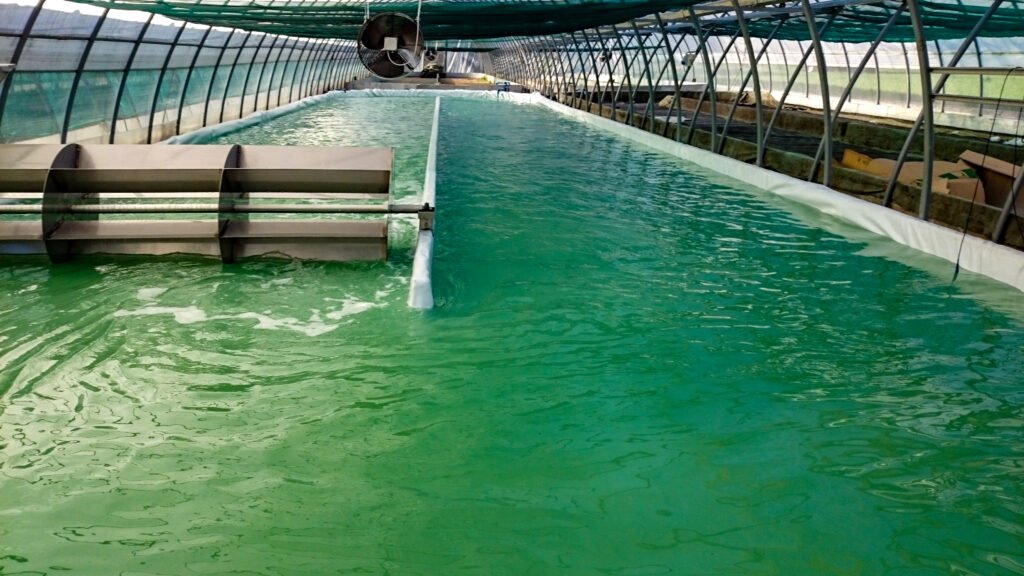Autotrophic Cultivation
Being the simplest and least expensive method, autotrophy is the most commonly used methods for microalgae cultivation.
In autotrophy, microalgae capture light energy and use carbon dioxide (CO₂) to grow and produce organic compounds, releasing oxygen (O₂) as a by-product. In order to remove excess O₂ and supply fresh CO₂, this method requires continuous ventilation, which is normally seen as a cost to be aware of.

Key Advantages
Microalgae can grow using only light and CO₂, reducing the need for costly external carbon sources.
This is the natural process of photosynthesis and is particularly beneficial in areas with consistent sunlight and sufficient space for photobioreactors.
Applications
Examples of autotrophic cultivation include producing high-value molecules such as phycocyanin from Spirulina, astaxanthin from Haematococcus pluvialis, and beta-carotene from Dunaliella salina.
Autotrophic Cultivation
Being the simplest and least expensive method, autotrophy is the most commonly used methods for microalgae cultivation.
In autotrophy, microalgae capture light energy and use carbon dioxide (CO₂) to grow and produce organic compounds, releasing oxygen (O₂) as a by-product. In order to remove excess O₂ and supply fresh CO₂, this method requires continuous ventilation, which is normally seen as a cost to be aware of.

Key Advantages
Microalgae can grow using only light and CO₂, reducing the need for costly external carbon sources.
This is the natural process of photosynthesis and is particularly beneficial in areas with consistent sunlight and sufficient space for photobioreactors.
Algren’s Applications
Examples of autotrophic cultivation include producing high-value molecules such as phycocyanin from Spirulina, astaxanthin from Haematococcus pluvialis, and beta-carotene from Dunaliella salina.